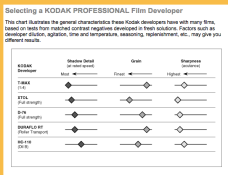arionelli
Member
OK, I'm renewing my interest in film and cameras 67 & 66 after playing (toying) around in the digital world...I would like to hear what the consensus these days is on the different films, best uses for same, availabilities, etc in 120...B+W fine grain for landscape, something perhaps a little grainier for portraits, the benefits of Kodak Portra 160 for landscape and 400 for people, Fuji Velvia 50 vs 100 vs Provia 100 in the slide world, newcomers.
Also, does anyone know of a good and reliable processing firm in Australia (pref on east coast but doesn't really matter these days)...
Lastly, about getting into the scanning thing, at least a Nikon unit for 120 film, correct? I guess I can't altogether avoid the digital thing as I'm not really keen to do my own chemistry.
Any suggestions would be beneficial and appreciated... the more the merrier, please.
Many thanks in advance
Martin
Also, does anyone know of a good and reliable processing firm in Australia (pref on east coast but doesn't really matter these days)...
Lastly, about getting into the scanning thing, at least a Nikon unit for 120 film, correct? I guess I can't altogether avoid the digital thing as I'm not really keen to do my own chemistry.
Any suggestions would be beneficial and appreciated... the more the merrier, please.
Many thanks in advance
Martin









 ), nor does it say enlarging or contact printing only.
), nor does it say enlarging or contact printing only. 

